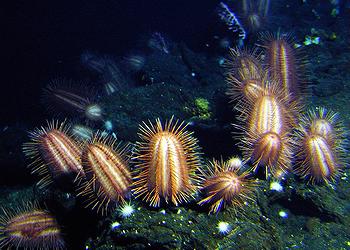
WELLINGTON, New Zealand, October 3, 2015 (ENS) – To safeguard a unique, pristine ocean environment, New Zealand intends to create a new sanctuary in the Kermadec Islands region of the South Pacific, about 1,000 kilometers (600 miles) northeast of the country’s North Island.
Prime Minister John Key announced the Kermadec sanctuary at the United Nations General Assembly in New York on Tuesday.

“The Kermadec Ocean Sanctuary will be one of the world’s largest and most significant fully-protected areas, preserving important habitats for seabirds, whales and dolphins, endangered marine turtles and thousands of species of fish and other marine life,” the prime minister told the General Assembly.
“It will cover 15 percent of New Zealand’s Exclusive Economic Zone, an area twice the size of our landmass, and 50 times the size of our largest national park in Fiordland.”
“Establishing the sanctuary will create a no-take, fully-protected zone preventing all fishing and mining in the area, adding to the protections already in place,” said Key.
Activities that will be allowed, in accordance with New Zealand’s international obligations, are ship navigation, overflight by aircraft, marine scientific research and submarine cables for communication.
The Key Government aims to pass legislation enabling creation of the sanctuary next year.
“The decision to proceed with the Kermadec Ocean Sanctuary ahead of this work was because of the pending decision by New Zealand Petroleum and Minerals on a significant seabed prospecting application in the area, and to align New Zealand’s protection measures with international initiatives,” said Environment Minister Nick Smith.

One of the world’s most geographically and geologically diverse areas, the Kermadec region contains the world’s longest underwater volcanic arc and the second deepest ocean trench at 10 kilometers deep.
The four main Kermadec islands and accompanying rocks are part of New Zealand.
Polynesian people are known to have settled the Kermadec Islands, possibly as early as the 10th century, but the first Europeans to reach the area in 1788 found no inhabitants.
Just 33 km2 (12.7 sq miles) in total area, the islands are now uninhabited, except for Raoul Island where a permanently manned meteorological, radio and conservation station is New Zealand’s northernmost outpost.
The new sanctuary will extend out to the 200 nautical mile limit of New Zealand’s Exclusive Economic Zone, from Raoul Island in the north to L’Esperance Rock in the south, covering a total area of 620,000 square kilometers.
It is 35 times larger than the combined area of New Zealand’s existing 44 marine reserves, and marks the first time an area of the island nation’s Exclusive Economic Zone has been fully protected.

Environment Minister Smith said, “Oceans are the new frontier for environmental protection. They make up 72 percent of the globe and are home to half of the world’s species, but currently only two percent is protected.”
“There is increased pressure from over-fishing, mining and pollution, with the populations of fish and seabird species estimated to have halved over the past 40 years,” said Smith.
Just as our forebears set aside significant areas of our land like the Tongariro and Fiordland National Parks, we need to protect special areas of our sea like the pristine ocean around the Kermadec Islands,” Smith said.
The Kermadec Ocean Sanctuary includes the second deepest ocean trench at over 10 kilometers – deeper than Mount Everest is tall – and an arc of 30 underwater volcanoes – the largest anywhere on Earth.
“It is home to six million seabirds of 39 different species, over 150 species of fish, 35 species of whales and dolphins, three species of sea turtles – all endangered – and many other marine species like corals, shellfish and crabs unique to this area,” Smith said.
Smith explained the legislative process that will establish the new sanctuary.
“We will be advancing a new framework for marine protection with an update of the Marine Reserves Act 1971. A discussion paper will be released later this year and legislation planned for 2016,” he said.

“I acknowledge the advocacy for the Kermadec Ocean Sanctuary from organizations like the Pew Charitable Trust, WWF New Zealand, the Royal Forest and Bird Protection Society, Ngati Kuri, and Greenpeace, as well as thousands of individual New Zealanders,” said Smith. “The Government will be introducing legislation to Parliament to enact the new Kermadec Ocean Sanctuary with the intention to have it in place by 1 October 2016.”
Champagne corks popped as the news was released that the Kermadec region will become an ocean sanctuary. Kermadec campaigners Forest and Bird, The Pew Charitable Trusts, and WWF-New Zealand were together when they heard the news.
Forest and Bird’s Anton van Helden called the announcement “pretty dammed exciting and a conservation highlight for us all.”
“This is a special day. This ocean sanctuary is a major achievement and is testament to many years of hard work by thousands of New Zealanders,” said Chris Howe, chief executive of WWF New Zealand.
“This is an announcement that all New Zealanders can take pride in,” said Bronwen Golder, director of The Pew Global Ocean Legacy Kermadec Campaign.
Pew’s Global Ocean Legacy campaign is working with local communities, governments and scientists to help create the world’s first generation of great parks in the sea. The project and its partners already have helped to double the amount of fully protected ocean around the globe.
The goal is the creation of 15 sea parks by 2022; a fully protected marine sanctuary in the Kermadecs will be its seventh contribution.
Copyright Environment News Service (ENS) 2015. All rights reserved.
© 2015, Environment News Service. All rights reserved. Content may be quoted only with proper attribution and a direct link to the original article. Full reproduction is prohibited.
